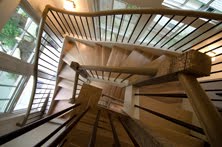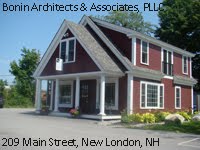 Economic Climate Opens Door for Small Wind Energy Projects
Economic Climate Opens Door for Small Wind Energy ProjectsWith utility-scale wind project developers cash-strapped and unable to obtain financing for large wind farms, small wind power project developers see a window of opportunity. by Sarah Lozanova, Contributor Wisconsin, United States [RenewableEnergyWorld.com]
Very few large-scale wind projects are able to obtain financing under the current economic climate. But falling turbine, steel and labor prices have created the perfect environment for mid-scale wind energy projects to thrive. Although total new installed capacity in 2009 may not rival the impressive 8,900 MW installed in North America in 2008, a golden opportunity exists for smaller wind development.
Small wind projects range in size from 100 kW to 30 MW and typically serve schools, farms, rural villages, businesses and municipal utility companies. Because these type of installations can access funding from various sources, they are less vulnerable to the credit crisis than their large-scale wind farm counterparts.
With the economic crisis taking its toll on wind energy development in 2009, large turbine manufacturers are paying more attention to the mid-scale market, giving smaller projects greater accessibility to utility-grade turbines.
Incentives for Small Wind Project Development
U.S. government support for wind energy through net-metering laws and an extension of the renewable energy production and investment tax credits offers stability to the industry, while stimulus funding provides a boost. In addition to the $1.6 billion in CREBs that is available to state and local governments, municipal utility companies and rural electric cooperatives, some state or local governments also offer grant or rebate programs.
Such incentives make wind projects more attractive, as do lower commodity and labor costs. “We’re already seeing manufacturers come back and say, ‘The steel prices have come down so much that the tower is now $100,000 cheaper,’” says -- Wes Slaymaker, of WES Engineering. “Since the economic collapse in late 2008, steel prices have come down at least 50 percent. The cost of labor has also come down because there are a lot of contractors looking for work.”
While these factors also benefit large wind projects, the financing difficulties that are plaguing the industry now have made it harder for large wind developers to take advantage of them so smaller developers, with greater access to capital, can step right in.
This special window of opportunity for smaller projects will not last forever. Although some encouraging factors will remain, the large-scale wind industry is likely to pick up as soon as liquidity returns to the market.
Although 2009 may be a year to survive for some players in the wind industry, it presents a golden opportunity for the mid-scale market. Time will tell if this opening will result in a boom in this segment of the industry. “If this opportunity for smaller projects is successful, we will start seeing the turbines ordered this year for projects to be installed later in the year or in 2010,” says Slaymaker. “It sounds like there are a number of small to mid-size projects working towards turbine purchase right now.”
 If you are building a new home, hiring an architect for the design and project management of the home can make the whole process go smoothly. Here are 10 questions you will want to ask the architects you interview for your project:
If you are building a new home, hiring an architect for the design and project management of the home can make the whole process go smoothly. Here are 10 questions you will want to ask the architects you interview for your project: 


















